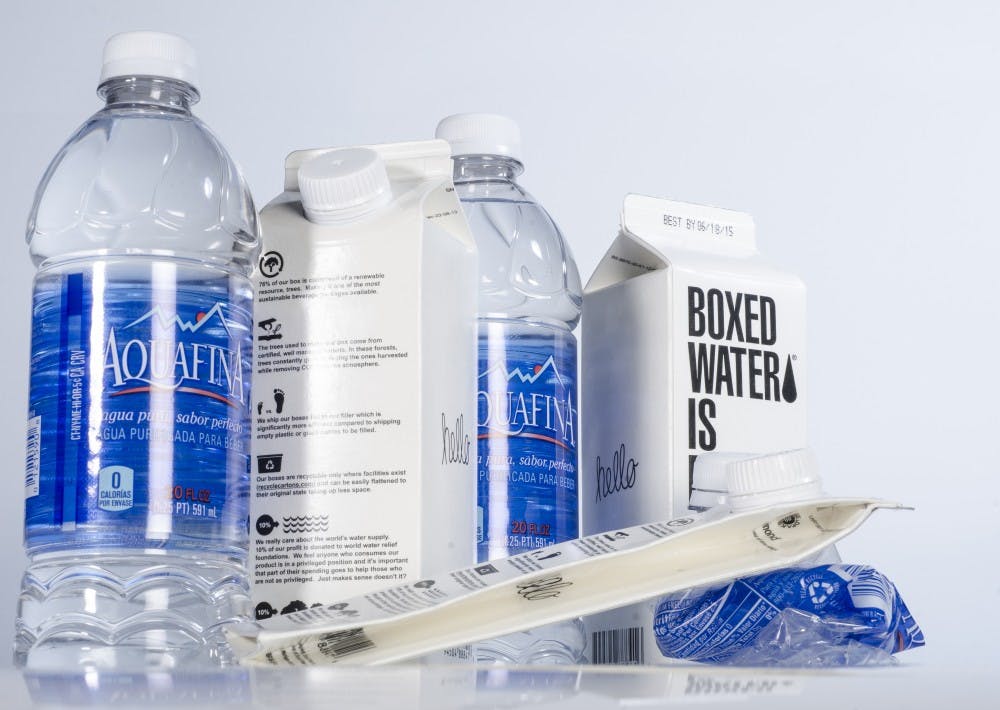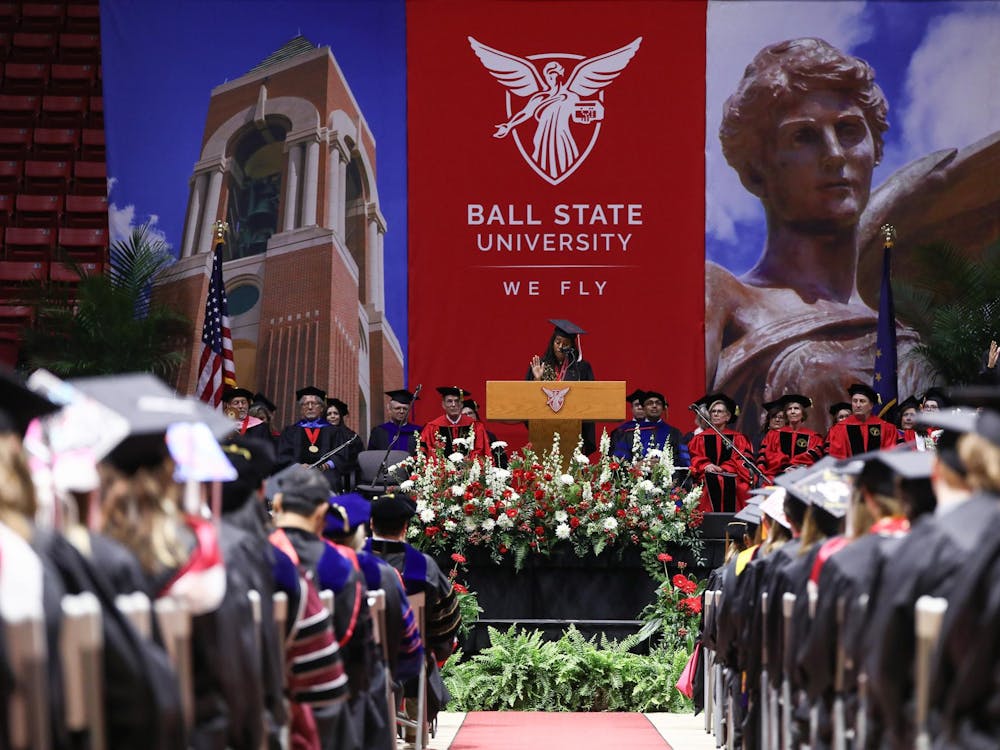BY THE NUMBERS
10 percent of its profit to global water relief and reforestation foundations
One third of the bottled waters tested contained significant amounts of contamination in at least one test
60 million bottles end up in landfills or incinerators every day
Source:
Natural Resources Defense Council site,
Boxed Water’s website
Container Recycling Institute
Forget thinking outside the box — think outside of the bottle.
Boxed Water has made its way into almost every dining hall on campus. As a more earth-conscious choice to bottled water, it has been well-received, according to dining.
The battle between Boxed Water, bottled water and tap water, however, still continues.
According to BoxedWaterIsBetter.com, the company started with a simple idea of creating a brand of bottled water that is less harmful and can support the environment rather than damage it.
John Pichtel, a Ball State natural resources and environmental management professor, said Boxed Water is a more eco-friendly route to take. He said it is able to save energy and give off less greenhouse gas omissions in the process of manufacturing the containers.
“Cardboard is made from a renewable source,” Pichtel said. “These are supposedly well-managed and sustainable forests that will continue to be replanted [as] opposed to plastic, which is manufactured by petroleum and is a non-renewable source.”
The forests are specialized and inspected to ensure that they comply with environmentally sustainable practice and principles. They remain healthy and stable through ongoing replanting while removing carbon dioxide from the atmosphere.
Boxed Water’s site said the company donates 10 percent of its profit to world water relief and reforestation foundations.
Sheryl Swingley, a representative for College of Communication, Information, and Media on the Council on Environment, said the campus should be rid of packaged water altogether and instead use tap water.
On Feb. 18, 2013, the CCIM council passed a resolution encouraging the university to avoid the use of bottled water at university events to push the use of tap water. Swingley said bottled water is barely regulated, compared to tap water.
According to Natural Resources Defense Council site, an interview with the Food and Drug Administration’s head bottled water regulator revealed that the FDA has one-half person per year in terms of ratios dedicated to bottled water regulation.
“We already have perfectly clean water,” Swingley said. “If you get your water from the tap, it’s tested at least four times a day from your local water company to ensure that it’s safe.”
According to NRDC, after testing more than 1,000 bottles of 103 different brands of water in three independent labs, it found that some of the brand’s quality was insufficient. About one third of the bottled waters tested contained significant amounts of contamination in at least one test.
Jon Lewis, dining director, said Boxed Water was introduced for the first time at a Professional Association Conference a few years ago, but it was not imported or shipped because of the large carbon footprint from the trip it would make from Finland. Last year, dining revisited the idea. The Boxed Water would be boxed at a closer location in Grand Rapids, Mich., and distributed out of Indianapolis through Costco.
“We did a trial run in the Tally food court and it flew off the shelves and became very popular,” Lewis said. “It’s not depleting other sales, and it’s adding to the variety. With the volume that we’re selling, a lot of students like it and accept it.”
He also said the biggest problem with bottled water is that people do not recycle. The Container Recycling Institute said more than 60 million bottles end up in landfills or incinerators every day.
Lewis said the next best thing to Boxed Water is tap water, which can be found at the Pepsi soda fountains in any dining area.
“We realize in dining that portability is important for students,” he said. “We understand if you don’t have a container and you’re out and about, a bottle is portable and we don’t want to take that away from students, but we also want to educate them and help them understand what a better option might be.”





